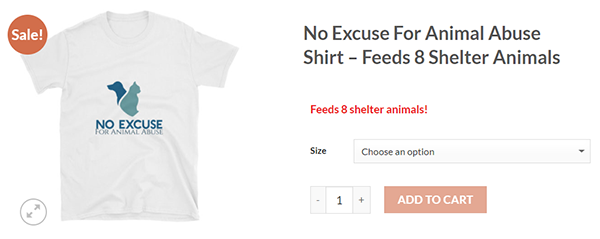Educational Series: No Animal Should be Hurt or Killed Making Movies
By Nick Engelfried
If you were growing up in the ‘90s–or maybe even more recently–you likely remember the animal protagonists in the popular children’s movie, The Adventures of Milo and Otis. The live-action film depicts a pug and an orange tabby cat who navigate a variety of comical and at times suspenseful adventures in the outdoors.
The Adventures of Milo and Otis was made in Japan and first released 1986, with an English-narrated version debuting in the United States in 1989. The story of two loyal animal friends persevering through challenges together was a hit with viewers in both countries, where the cat and dog actors captured the hearts of countless children and families. It also met with widespread critical acclaim, with a New York Times review describing the film as “a picaresque odyssey that begins on a farm and follows its two protagonists on an extended journey through hundreds of miles of wilderness.”
However, more than thirty years later, questions linger about possible harm suffered by cats and dogs during the making of the film. Indeed, the controversy over Milo and Otis has become an often-cited example of the ethical pitfalls involved in making movies that feature live animals.
Soon after its release, several scenes in Milo and Otis prompted some viewers and animal rights groups to ask whether making the movie resulted in the abuse or even deaths of animal actors. In one such scene, the cat Milo leaps off a cliff while being attacked by seagulls. In another, the dog Otis is injured in a fight with a bear. While these parts of the film make for an exciting narrative, they raise questions about how such scenes could have been captured without exposing real animals to actual harm and danger.
The exact degree to which animals suffered in the making of Milo and Otis is unknown. A post by PETA Australia describes it as a film “for which, in order to get the right shot of a cat falling off a cliff, filmmakers simply threw the cat over the edge.” However, Snopes rates the claim that animals were abused in its making as “unverified,” mainly due to a lack of concrete information about how exactly the most controversial scenes were made. What we do know is there continues to be a raging debate over the treatment of animals used in the making of movies, even today.
Animals who have allegedly been abused in the making of popular films include dogs, cats, horses, rabbits, turtles, and many others. Some of the most blatant forms of cruelty used in twentieth-century films–like popular Westerns that used a specialized tripwire known as the “running W” to make horses collapse mid-run–have now been banned. However, cruel treatment persists, sometimes even occurring out in the open.
The 2003 film Oldboy, filmed in South Korea, depicts its protagonist eating a live octopus, and the movie’s creators have made no secret of the fact that a real octopus was indeed subjected to this grisly death in its making. In fact, four octopuses were killed over the course of the four takes it took to get the scene right. Octopuses are known to be among the world’s most intelligent invertebrates, with the ability to use tools, solve maze challenges, and recognize individual human faces. It is hard to imagine the pain and suffering the ones killed in the making of Oldboy must have endured.
It seems even some of the actors in Oldboy felt discomfort or guilt about what they were doing. Choi Min-sik, the actor playing the film’s protagonist, is reportedly a vegetarian and said a prayer for each living octopus he consumed. Of course, this does not make the act any more humane, and the fact that the cast went ahead with the scene anyway underscores a troubling reality: the pressure within the film industry to make stunning movies, and the rewards of fame and riches that come with it, can be enough to make actors and directors override their own consciences, to the tragic detriment of animals.
While the makers of Oldboy have been fairly candid about their treatment of octopuses for the film’s entertainment value, more often allegations of cruelty involve events that happen behind the scenes. In early 2017, a video emerged purporting to show cruel treatment of a German shepherd in the making of the film, A Dog’s Purpose–footage the makers of the movie seemingly never intended to be made public.
The video, released by the entertainment news site TMZ, appears to show the dog in question resisting as the animal is urged to enter roiling water meant to simulate a river’s rapids, while an unidentified voice says it will have to be thrown in. Amblin Entertainment, the company behind the movie, claims the dog was not actually forced into the water against its will, and the video cuts away before showing definitively whether this occurred. However, it certainly seems to depict an animal in real distress, and the video’s release caused a public outcry that temporarily derailed the debut of A Dog’s Purpose.
The controversy over A Dog’s Purpose is particularly troubling because the film had been approved by the American Humane Association, an organization that’s supposed to serve as a third-party entity verifying the appropriate treatment of animals in the film industry. After the video seeming to show the German shepherd’s abuse was released, AHA suspended the field representative who was meant to be on-site during the film’s making.
As with The Adventures of Milo and Otis, we don’t really know–and may never know–exactly what happened to the animal actors involved in the production of A Dog’s Purpose. Still, the fact that AHA supervision may not have been enough to prevent abuse suggests there is an inherent difficulty in independently verifying claims that a movie is cruelty-free. It may be that the only way to eliminate inhumane treatment in the film industry is to simply end the use of live animals altogether.
The Animal Legal Defense Fund points out that with today’s technology, it is entirely possible to make stunning films featuring animals that are completely computer-generated. In fact, “live-action” Disney films like The Lion King and The Jungle Book depict a diverse assortment of animal characters who are completely artificially generated.
As technologies and public sentiment about animal cruelty evolve, the film industry must find ways to adapt. Today, it is clearer than ever that subjecting animals to inhumane treatment for entertainment is unacceptable, and must become a practice relegated to the past.
Photo credit: PickPik
Wait, there’s one more step:
Over 1,620,280 Animal Shelter Meals Donated So Far –
Upgrade to a Premium Membership to get a free No Excuse For Animal Abuse shirt, feed shelter animals with the Educational Series and Meal Wheel, sign 100’s of petitions with one-click, remove ads, and promote your favorite petitions to millions!
7 day money-back guarantee for new members. Zero risk.
Premium Membership comes with the following perks:
• Get a free No Excuse For Animal Abuse shirt.
• Feed shelter animals by spinning the Meal Wheel.
• Sign 100’s of petitions with one-click.
• Feed shelter animals with the Educational Series quizzes.
• Remove ads and vote on which petitions are displayed to millions of people.
Our Guarantee:
Cancel your subscription for any reason within 7 days and we’ll refund 100% of your money, as long as you’re a first time member.
Frequently Asked Questions:
How are the animal shelter meals donated?
We donate shelter meals through Rescue Bank because they research all shelters, maintain equitable distribution, and track the meals from their facilities all the way to the rescue groups. This ensures that the donation will be utilized in the most efficient and impacting way.
Why don’t we just donate meals without providing any perks like the Meal Wheel?
We’ve been at this since 2008 and have learned that to really make a difference, we need to get people excited and engaged. Our mission is a serious one, but our methods are playful and educational. We’re serious about doing good, but also want to make it fun.
Who are we?
We are a family of sites that works to protect animals, the environment, and more. Our sites include AnimalPetitions.org and ForceChange.com. We’ve been at this for over a decade and are dedicated to protecting and defending animals and the environment. If we can have some fun and improve the world, then we’re accomplishing our goal!

We’ve Been Doing This for Over a Decade and Others Have Taken Notice:

Testimonials:
“Thank you SO much for the premium feature of being able to sign multiple petitions with one click. Many of us go for hours at a time signing each and every petition and crying as we read them. I have often wished for a way to sign my name on every petition because I passionately support them and they all need our voice. This is the best thing – thank you very much!” -Karilyn K., Premium Member“This is just the most amazing wonderful service that makes me so happy! To be able to feed shelter pets is just the greatest feeling. Thanks again for this, and for all you do for the most innocent and helpless among us, the animals. I’m lovestruck.” Sandra Z., Premium Member
“I love the upgrade option and I am so glad I did it.....it enables me to stand with you and many others to fight for the justice these precious souls deserve! We are their voice!!!! And....I adore helping to feed them as well! The spin the wheel game is fun....and I like doing it everyday to help! Keep up the wonderful work....and I know....every click makes a difference!” Dorothy B., Premium Member
“I am so excited to become a Premium Member and to have one-click signing, as I was spending countless hours signing petitions...not that I mind doing it, but my goodness, there sure are a lot of them. I always hope that my signature somehow helps, because these people that abuse/torture animals, need to be put away. As you can tell, that is my passion, I have such a heart for animals, and I want to be their voice.” Darlene R., Premium Member
“Thank you so much! I love being a premium member and spinning that wheel every day, especially when I land on 4 or, best of all, 5 meals. Thank you for all you do, we are all so grateful for you.” Sandy T., Premium Member
“With deepest Aloha, You have no idea how grateful I am for you!” Jan L., Premium Member
“Thank you for the Premium Membership option. I really appreciate that I can sign multiple petitions with one click. It's great! Thank you for the work you do.” Ashley H., Premium Member
“I absolutely love the Educational Series!” Yvonne L., Premium Member
"I am a premium member and religiously sign every petition. THANK YOU for this platform. I also vote for the petition nearest my heart, sometimes voting globally, sometimes I am caught by an individual animal's plight. What gives me great pleasure is noting that almost always, the percentages have no more than a 6-7% spread. It means that, overall, everyone cares about all of the petitions ALMOST EQUALLY! LOL, I also spin that wheel, and when I get 4 or 5 meals, I dance around the room! I have long maintained that what someone does to a helpless animal, they will do to a weaker human if they think that they can get away with it. Those who abuse, no matter how many legs their victims have, should be punished to the fullest extent of the law." Rebecca E., Premium Member
"I LOVE LOVE LOVE my Premium Membership! Everything and anything I can do to help animals and contribute to justice in the world makes me very happy!" Jan L., Premium Member
"Thank you, I love what you do. My friends and I love the membership because we can sign so many more petitions that we may never had heard of. Keep up the good work." Virginia G., Premium Member
Still have questions? Email us: animalpetitions@forcechange.com
Nick Engelfried Writes About Animals, the Environment, and Conservation for the ForceChange network









